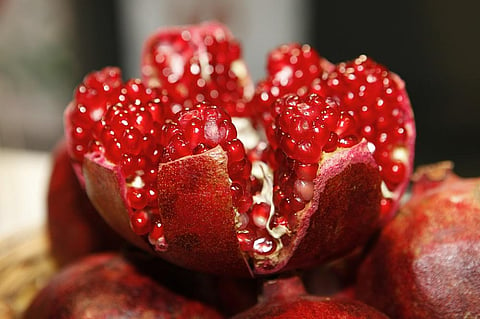The supremacy of superfoods
KOCHI: Superfoods are becoming a popular diet style across the globe due to their particular health claims. These started gaining popularity due to their array of nutrients which actually make a difference in enhancing health and other physical features such as hair and skin.
What are superfoods?
Superfoods are foods that can provide nutrients in high quantities and play an important role in diets and contribute to the proper operation of the body (AESAN, 2019). Superfoods are a great option to improve overall health, boosting the production of serotonin and other hormones, and promoting the smooth operation of organic systems of the human body.
Superfoods have a good bioavailability (measure of absorbed protein) and have an impeccable amount of nutrients and bioactive substances.
Examples of superfoods
- Fruits: Goji berry, acai berry, pomegranate, blackberry, avocado, passion fruit, mangosteen, jackfruit, dragon fruit, etc.
- Nuts and seeds: Chia, flax, hemp and carob seeds
- Grains: Buckwheat, amaranth, quinoa, cocoa, oats
- Roots and tubers: Ginger, ginseng, yam, chicory root, ashwagandha
- Vegetables: Kale
- Herbs and spices: Matcha tea, moringa, and turmeric
- Others: Pollen, Spirulina, chlorella
Why superfoods?
Superfoods are consumed on a regular basis as part of a diet and present health benefits, reducing the risk of diseases and beneficially affecting target functions beyond the basic nutritional needs. They are also associated with nutraceuticals that are described as a food or part of a food that provides medical benefits, including the prevention and/or treatment of disease. Superfoods help to restore health, enhance function and reduce risk.
What too keep in mind?
Superfoods must be defined and have their own legislation in terms of requirements or labelling, such as ‘eco’ or ‘bio’ products, which are governed by the Regulation (EU) 2018/484, on ecological production. It states a product can only be advertised as organic or bio when at least 95% of the ingredients come from ecological production.
Depending on the superfood, the benefits provided to the organism are various and diverse. These healthy properties are associated with the content of specific components.
- Fruits: The so-called ‘superfruits’ are deemed ‘super’ by nutritional scientists due to extremely high levels of antioxidants (carotenoids, flavonoids, and phenolic compounds), fibre, vitamins (especially ascorbic acid or vitamin C) and minerals.
- Grains: Both cereals and pseudo-cereals are attracting attention due to the quality and nutritional value of their proteins, fibre, phytochemicals, and minerals profile. Quinoa (14.1 g of protein/100g), amaranth (13.6/100g), oats (16.9/100g) and buckwheat (13.2/100g) have high protein content, larger than traditional cereals. Quinoa, usually compared with rice, have larger fibre content (7 g vs 0.2 g/100g), and all minerals are available in greater quantities as well as bioactive compounds and vitamins. Oats, amaranth and buckwheat have outstanding mineral and vitamin profiles, especially potassium, phosphorus, calcium, iron and B complex vitamins, which are the richest in cereals.
- Legumes, nuts and seeds: Considered a good substitute for animal-derived products since they are especially rich sources of protein, fiber, and vitamins. Hemp, chia and flax seeds are high in protein, fibre and minerals.
- Herbs and spices: Turmeric is the most complete superfood of this classification, presenting desirable amounts of fibre, carbohydrates, minerals, and part of vitamins.
- Others: Like bee pollen and algae. Bee pollen is an important source of macronutrients, containing 17.4 g of protein/100 g, minerals and significant phytochemicals. In algae products, both spirulina and chlorella (dried) are known for their great percentage of protein.

